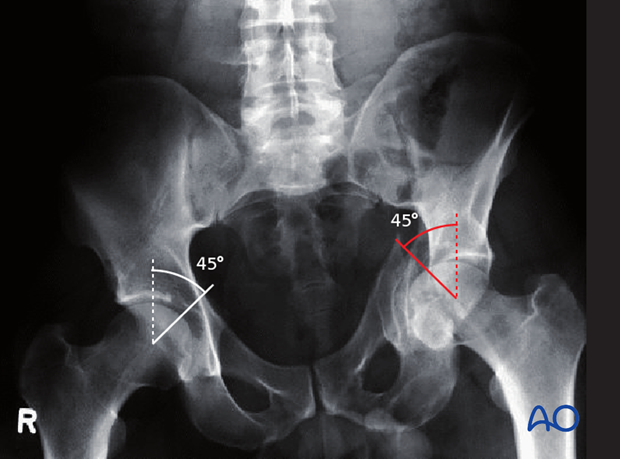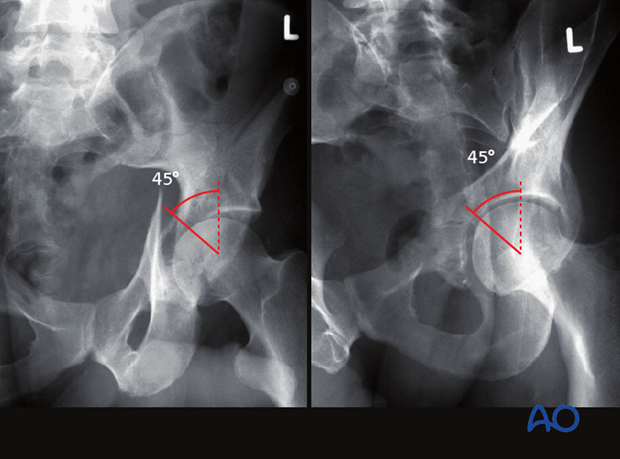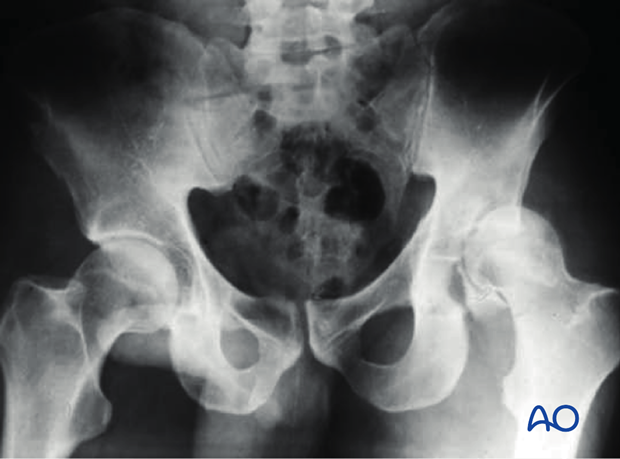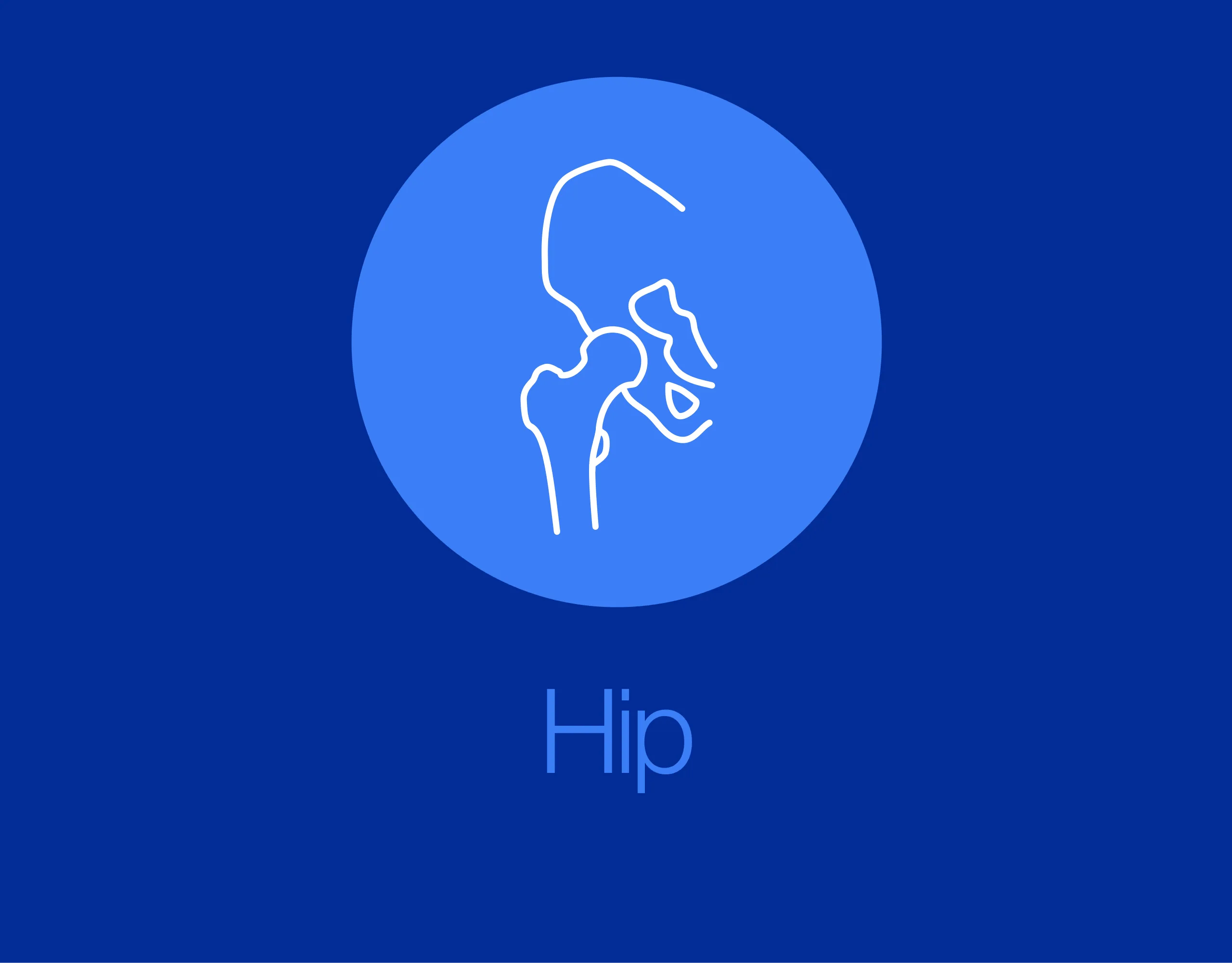Decision making: nonoperative vs surgical treatment
1. Indications for conservative treatment
Acetabular fractures are articular fractures, so they should be treated under the principles of anatomical reduction, stable internal fixation, and early mobilization.
However, nonoperative treatment is relatively common for fractures in patients with increasing age and poorer quality bone.
It may represent an active choice for the start of a treatment strategy that includes a total hip replacement as a delayed procedure.
Indications for conservative treatment are:
- Medical contraindications
- Pre-existing osteoarthritis
- Local infections
- Osteopenia of the innominate bone
- Special fracture characteristics
- Undisplaced fractures
- Very low transverse or anterior column fractures
- Both column fractures that achieve secondary congruence
2. Contraindications to nonoperative treatment
Contraindications to nonoperative treatment, and thus indications for surgical treatment, are instability and incongruity.
Instability: Hip dislocation associated with:
- Posterior wall or column displacement
- Anterior wall or column displacement
Incongruity:
- Fractures through the roof or dome
- Displaced dome fragment
- Transverse or T-types (transtectal)
- Both column types with incongruity (displaced posterior column) - Retained bone fragments
- Displaced fragments of the femoral head
- Soft-tissue interposition
3. Stability of the fracture
Stability is determined by a roof arc measurement.
The roof arc angle is determined in the following way:
- Three radiographic views are needed: AP view, iliac and obturator oblique views.
- Begin by drawing a vertical line through the center of the acetabulum (or the center of the reduced femoral head) on each radiographic view.
- Now add a second line, intersecting the first at a 45° angle at the level of the femoral head’s center.
If the second line is outside of the fracture zone in each of the three radiographic views, the fracture is considered stable.
Our example shows a fractured weight bearing dome of the left acetabulum, with the second line well within the fracture zone, indicating instability.

These images show corresponding measurement of the roof arc on iliac oblique (left) and obturator oblique (right) views.

4. Amount of incongruity
The joint would be considered incongruent if:
- Step bigger than the width of the cartilage
- Gap bigger than width of the cartilage
- Marginal impaction
- Fracture involving >20% of the surface of the weight bearing area
- Increasing of 20% of the circumference of the acetabulum at the equator of the femoral head














